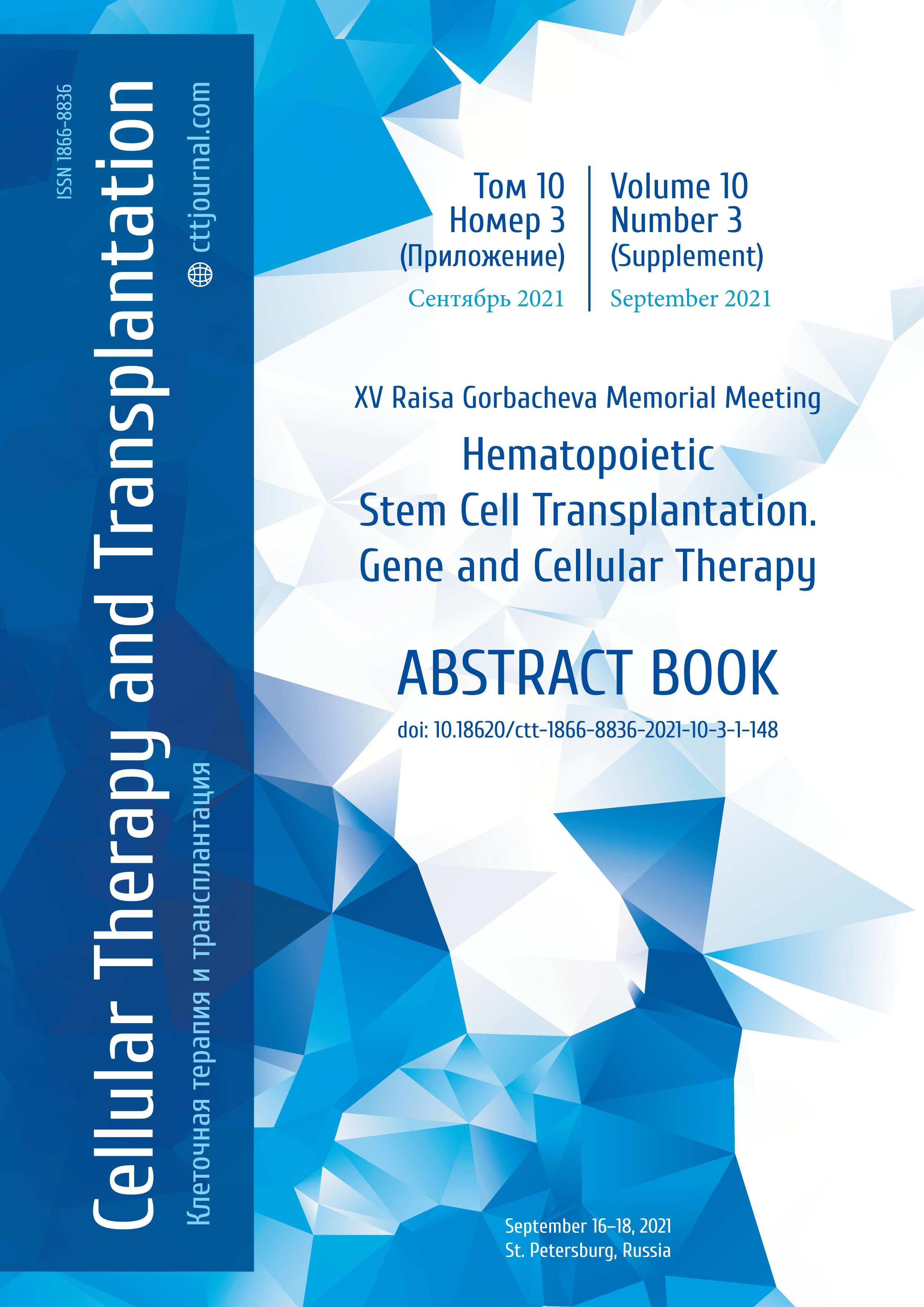IC-03. Portable non-invasive lung ventilation for bronchiolitis obliterans after allogeneic hematopoietic stem cell transplantation
Anna A. Obukhova1, Victoria A. Pavlova1, Nikita V. Markov1, Arina V. Zinchenko1, Christina A. Popova2, Yuriy N. Kuznetsov3, Valeria R. Yanbukhtina3, Egor A. Kulagin4, Ruth D. Skvortsova1,5, Julia D. Rabik2,5, Anna G. Smirnova3, Alexander N. Kulikov5
1 Department of Respiratory Therapy, Research Institute of Interstitial and Orphan Lung Diseases, Pavlov University, St. Petersburg, Russia
2 Department of Functional Diagnostics №2, Pavlov University, St. Petersburg, Russia
3 RM Gorbacheva Research Institute, Pavlov University, St. Petersburg, Russia
4 M. Chernorutskiy Department of Hospital Therapy with Clinic, Pavlov University,
St. Petersburg, Russia
5 Department of Functional Diagnostics, Pavlov University, St. Petersburg, Russia
Correspondence:
Dr. Anna G. Smirnova, e-mail: dr.annasmirnova@gmail.com
Summary
Portable non-invasive ventilation (PNIV) is a modern option of respiratory support in the treatment of acute and chronic respiratory failure. Efficiency of PNIV was previously noted in patients with obstructive sleep apnea syndrome, ventilation-type respiratory failure in chronic obstructive pulmonary disease, bronchial asthma and lung damage in the new coronavirus infection SARS-CoV-2 with signs of hypercapnia. PNIV contributes to the creation of positive pressure in the respiratory tract and improves gas exchange in the form of reducing signs of hypoxemia and hypercapnia by increasing bronchial permeability and alveolar ventilation, and also reduces fatigue of respiratory muscles. To date, there are no literature data on the PNIV using in patients with bronchiolitis obliterans (BO) after allo-HSCT. The aim of current study was to evaluate the efficiency of PNIV as an ancillary treatment of BO in the structure of chronic GVHD after allo-HSCT.
Patients and methods
The study included 17 patients (11 women and 6 men) after allo-HSCT with BO, according to the NIH criteria. The median age was 35 (18-57) years. All the patients received FAM-like (100%) and immunosuppressive therapy (88%). Complex pulmonary function tests (PFTs) (spirometry, body plethysmography, diffusion capacity of carbon monoxide (Dlco) and arterial blood gas test were performed. Clinical characteristics are presented in Table 1. Seven (42%) patients with significant PFT abnormalities were selected for PNIV. Signs of hypercapnia and hypocapnia were identified in 5 (71%) and 2 (29%) cases respectively. Portable automatic devices Prisma 25S (Loewenstein Medical (Weinmann), Germany) were used for PNIV. The early treatment response was assessed according to the NIH criteria by the changes of forced expiratory volume in one second (FEV1) – partial response (≥ 10%, increase), stabilization (< 10% change), progression (≥ 10% decrease), as well as a clinical assessment by the decrease of dyspnea by at least 1 point according to the modified Medical Research Council (mMRC) scale.
Results
After 2 weeks of PNIV, six patients (86%) demonstrated positive dynamics by the decrease of dyspnea and an increase in exercise tolerance by 1 point or more to the mMRC scale. The control PFTs in 3 (43%) patients demonstrated a decrease in the residual volume and an increase in the vital capacity, FEV1 and Dlco. Repeat control PFT control in one patient after 3 months using PNIV showed the maintenance of positive functional dynamics. One patient refused to perform control PFT and continue using PNIV. One patient died due to bronchopulmonary infection developed before the start of PNIV. Two patients couldn’t perform control PFTs due to poor performance status and continued using PNIV for 3 months. After 3 months, both patients showed the decrease of dyspnea to the mMRC scale, but only one patient had positive functional dynamics. The second patient had progression of cGVHD with significant weight loss. His control PFT showed an increase in obstructive and restrictive disorders. Taking into account the positive clinical dynamics, PNIV was continued in 5 patients with BO.
Conclusion
Respiratory support can play a significant role in the complex treatment of BO after allo-HSCT. This study demonstrates an encouraging short-term effect of PNIV in reducing obstructive disorders and increasing exercise tolerance. The long-term effect of PNIV in the treatment of pulmonary GVHD requires further observations.
Keywords
Portable non-invasive ventilation, bronchiolitis obliterans, allo-HSCT, chronic graft-versus-host disease.
Table 1. Clinical characteristics of patients with BO after allo-HSCT

Abbreviations: SAA – severe aplastic anemia, AML – acute myeloid leukemia, ALL – acute lymphoblastic leukemia, CML – chronic myeloid leukemia, FEV1 – forced expiratory volume in one second, PaCO2 – arterial carbon dioxide partial pressure, PaO2 – arterial oxygen partial pressure, HCO3 act – hydrogen carbonate, BE (ecf) – base excess, O2 SAT – arterial oxygen saturation, tCO2 – total amount of carbon dioxide


